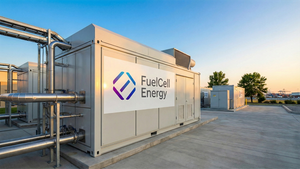Workers in HVAC and welding face several significant dangers on the job that can lead to serious injuries qualifying for compensation claims in Florida. Common incidents include electrical shocks, chemical exposure, falls, burns, and respiratory illnesses. Understanding these hazards is crucial for those injured, as it directly impacts their eligibility for compensation and the steps they can take to protect their rights.
Many workplace injuries arise from unrecognized risks such as improper handling of materials, inadequate safety measures, or prolonged exposure to harmful substances. Workers should be aware of how these frequent incidents might affect their compensation claims. For those seeking support, consulting with knowledgeable professionals experienced in injury claims can provide essential guidance when dealing with these situations.
Injuries from these industries often require immediate attention and legal assistance to ensure fair treatment and compensation. Those affected in Florida are encouraged to explore available avenues for recovery and legal redress through reliable workers’ compensation resources.
Key HVAC & Welding Workplace Hazards Eligible for Compensation
Workers in HVAC and welding roles frequently face risks tied to chemicals, electrical systems, physical strain, thermal injuries, and sensory damage. Understanding these dangers is vital for identifying cases that qualify for compensation due to workplace injuries or illnesses.
Chemical Exposure and Respiratory Risks
HVAC technicians encounter hazardous substances such as refrigerants, solvents, and cleaning agents. These materials can cause respiratory distress, chemical burns, and long-term lung conditions when inhaled or contacted without proper barriers.
Welding processes emit fumes containing metals like manganese and lead, which pose serious health effects after prolonged inhalation. Enclosed spaces heighten these risks, necessitating ventilation systems and industrial-grade respiratory protection.
Using personal protective gear such as air-purifying respirators minimizes exposure. Regular monitoring of air quality and adherence to OSHA standards help prevent occupational illnesses linked to harmful airborne agents.
Electrical Hazards in HVAC and Welding
Dealing with high-voltage wiring and energized equipment exposes HVAC technicians and welders to potential electric shock, burns, or fatal injuries. Faulty insulation, damp environments, or improper grounding increase danger.
Electric shocks can occur from touching uninsulated cables or when tools contact live circuits. Equipment maintenance, proper grounding, and the consistent use of insulated gloves and tools reduce these hazards significantly.
Musculoskeletal Injuries and Repetitive Strain
Tasks requiring prolonged bending, lifting, and fine motor skills often lead to musculoskeletal disorders. HVAC professionals routinely manage heavy components, while welders maintain static, awkward postures.
Repetitive motions increase the chance of nerve compression conditions such as carpal tunnel syndrome. Such injuries cause pain and limit hand function, impairing job performance and quality of life.
Workstations designed with ergonomics in mind, frequent breaks, and use of mechanical aids reduce physical strain. Early reporting of symptoms and workplace adjustments are critical to preventing permanent damage.
Burns, Frostbite, and Extreme Temperatures
Exposure to hot metal, sparks, and flame during welding commonly causes burns, often requiring medical treatment and workplace compensation. HVAC technicians, on the other hand, face hazards from handling cryogenic refrigerants and cold systems.
Contact with extremely cold surfaces or gases in HVAC work can result in frostbite or hypothermia. Both professions must wear thermal protective clothing and adhere to safety protocols to minimize incidents involving extreme temperatures.
Employers should provide training on recognizing thermal injuries and methods to respond quickly. Access to suitable personal protective equipment (PPE) is essential for reducing risks during these high-temperature operations.
Vision and Hearing Impairment Risks
The intense light emitted by welding arcs can damage the eyes, causing “arc eye” or permanent retinal injury without proper shielding. HVAC technicians risk eye exposure when working near high-velocity particles or chemical splashes.
Noise from welding, grinding, and HVAC machinery can lead to hearing loss if untreated over time. The use of hearing protectors such as earmuffs or earplugs is crucial to prevent noise-induced impairment.
Workers benefit from safety glasses with appropriate filtering lenses along with regular audiometric testing. Implementation of protective barriers and engineering controls further lowers the risk of sensory injuries in these trades.
Protective Measures and Workers’ Compensation Process in Florida
Safety regulations, proper gear, and a clear procedure for injury claims are essential in hazardous HVAC and welding environments. Understanding regulatory roles, correct protective equipment use, and the claim steps helps workers and employers manage risks effectively and secure benefits when injuries occur.
Roles of OSHA and Safety Compliance
The Occupational Safety and Health Administration sets and enforces safety standards to reduce workplace risks, especially for HVAC and welding operations. Employers must adhere to these regulations, including maintaining safe equipment, implementing hazard controls, and providing training.
Regular inspections and compliance audits ensure that workplaces meet legal safety requirements. Failure to comply can lead to penalties and increased liability. OSHA also offers guidance on managing risks from electrical exposure, chemical handling, and confined spaces found in these trades.
Employers must create a documented safety program, including emergency response plans and routine evaluation of hazards. This approach reduces injury incidents and encourages a safer work environment for technicians.
Importance of Proper PPE for Technicians
Personal protective equipment is vital in limiting exposure to hazards such as ultraviolet radiation from welding, electrical shocks, and chemical fumes common in HVAC work. Appropriate PPE includes insulated gloves, eye protection, respirators, and flame-resistant clothing.
Selecting the right gear depends on the specific task and associated risks. For instance, welding helmets with the correct shading protect against UV radiation damage, while respiratory protection minimizes inhalation of refrigerant gases.
Regular training reinforces proper use, maintenance, and replacement of PPE. Employers are responsible for providing suitable equipment and monitoring its effective use to safeguard workers during operations involving heat, chemicals, or mechanical dangers.
Filing for Workers’ Compensation Benefits
When injuries occur, Florida’s workers’ compensation system offers medical coverage and wage replacement for affected employees. Workers should report injuries promptly typically within 30 days to their employer to qualify for benefits.
The process requires submitting a formal claim detailing the incident and injury. Employers then file this with their insurance carrier, which evaluates and processes the claim. Injured workers may receive coverage for medical treatment, rehabilitation, and in some cases, vocational support.
Delays in reporting or incomplete documentation can complicate or reduce benefits. Employers and employees must adhere to state rules and maintain clear communication throughout the claim process to ensure rightful compensation.





